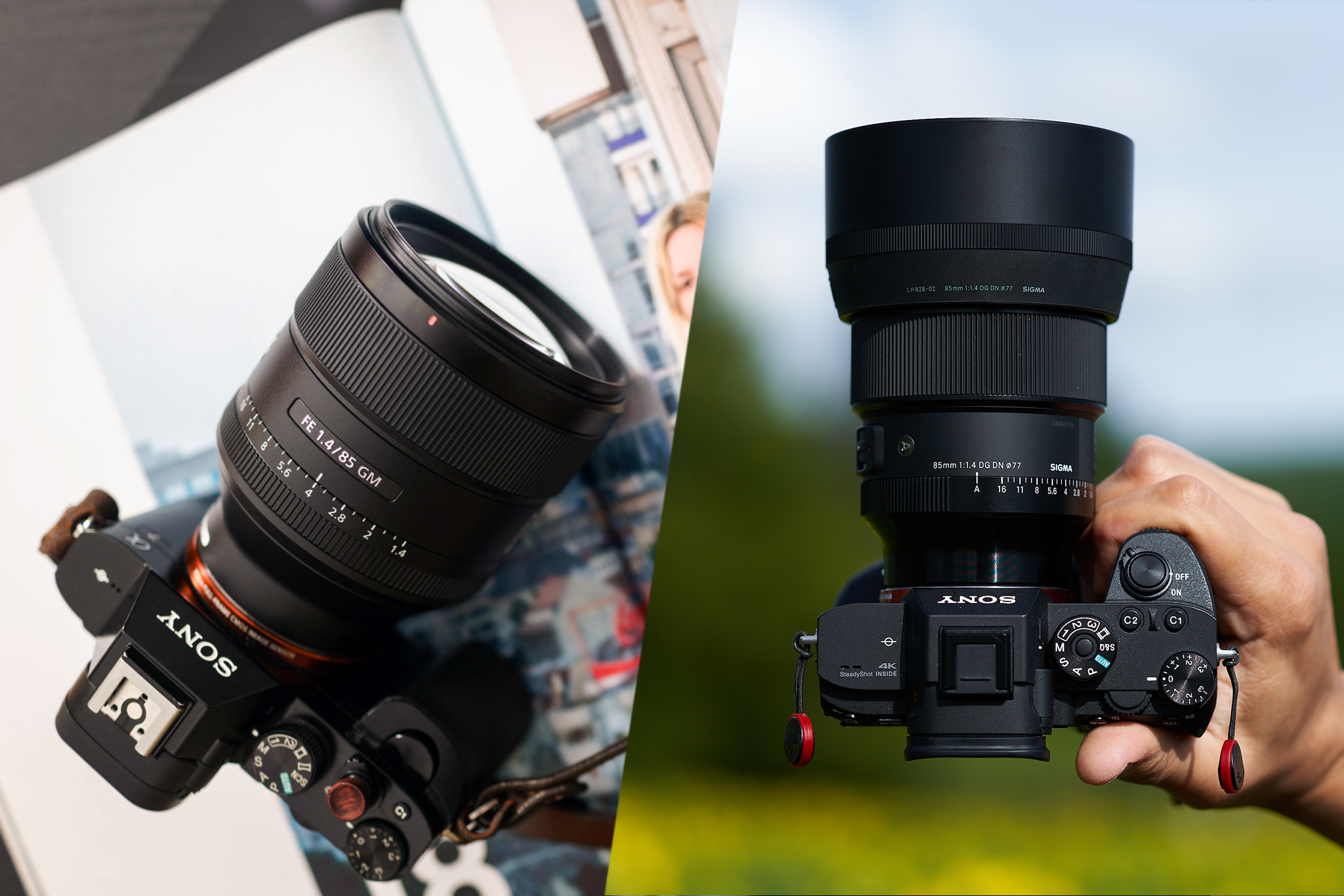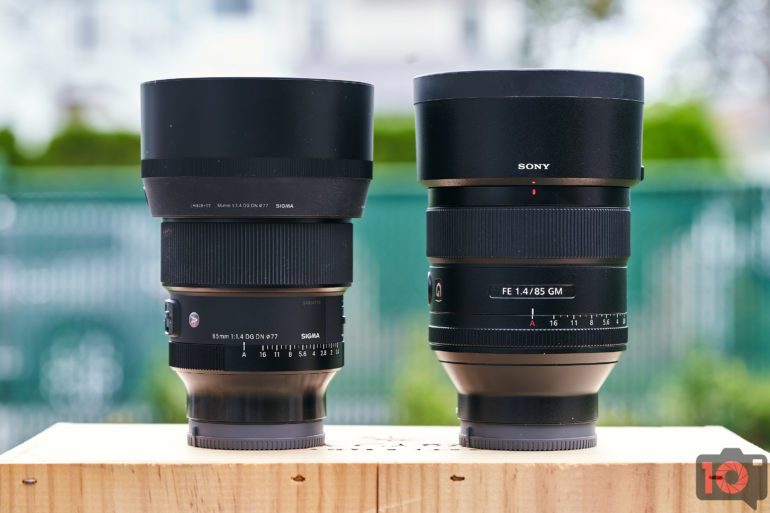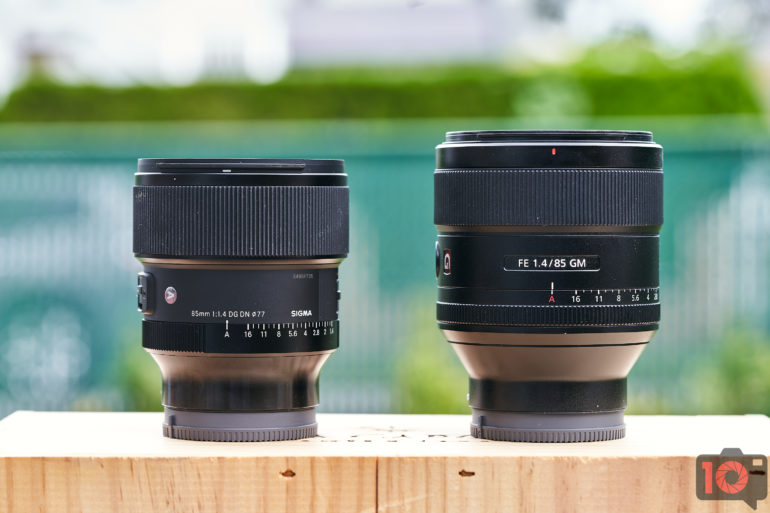It’s Sony vs Sigma as the Sigma 85mm f1.4 DG DN Art and the Sony 85mm f1.4 G Master duke it out!
The Sigma 85mm f1.4 DG DN Art competes directly with Sony’s well-received 85mm f1.4 G Master. Both lenses share an identical focal length and maximum constant aperture. There are other similarities, too: they boast an 11-bladed circular aperture, weather sealing, a customizable focus hold button, a de-clickable aperture ring, and a dedicated focus mode switch. The Sigma even includes an aperture ring lock that the Sony lacks, and costs a fraction of what the G Master does. Did Sigma have to cut any corners to achieve the lower price point? Let’s put these two 85mm portrait lenses head to head and find out in the battle of Sony vs Sigma!
Table of Contents
Facts and Figures
Here’s the Sigma 85mm f1.4 DG DN Art (in Sony E Mount) next to the Sony 85mm f1.4 G Master. The Sigma is actually smaller and lighter than the Sony. With their lens hoods attached, however, they look almost identical in size.
The difference becomes apparent when you remove their lens hoods. The Sigma is clearly more compact.
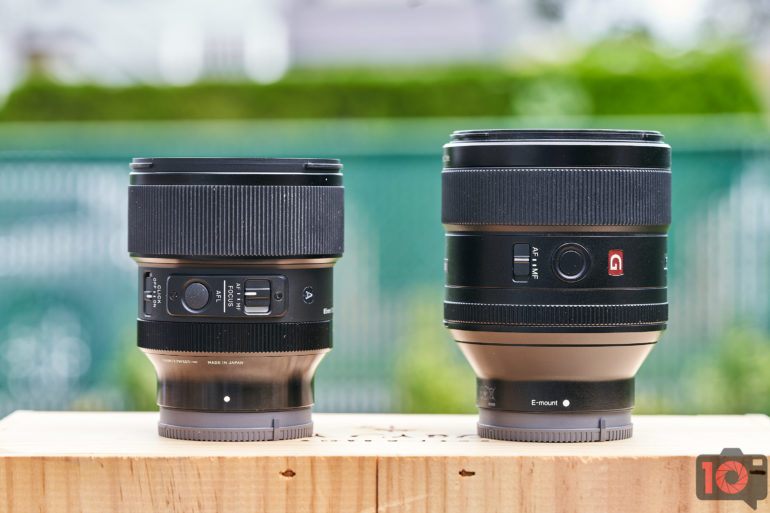
Both 85mm portrait lenses feature a dedicated Focus Mode Switch, a customizable Focus Hold Button, and a de-clickable Aperture Ring. The G Master’s Aperture Ring Click Switch is located on the opposite side.
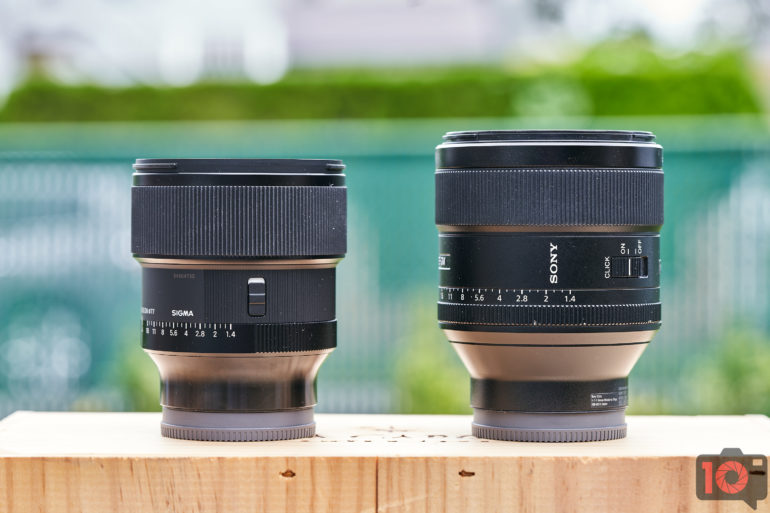
The Sigma 85mm f1.4 DG DN Art also includes an Aperture Ring Lock Switch. This is absent on the Sony G Master. Let’s look at the facts and figures:
| Lens | Sigma 85mm F1.4 DG DN Art | Sony 85mm f1.4 G Master |
| Focal Length | 85mm | 85mm |
| Maximum Aperture | f1.4 | f.14 |
| Minimum Aperture | f16 | f16 |
| Aperture Blades | 11 | 11 |
| Lens Construction | 15 Elements in 11 Groups | 11 Elements in 8 Groups |
| Angle of view (35mm) | 28.6° | 29° |
| Minimum Focusing Distance | 85cm / 33.5in | AF 85cm / 33.5in MF 79.86cm / 31.44in |
| Maximum Magnification Ratio | 0.12 × | 0.12 × |
| Filter Size | φ 77mm | φ 77mm |
| Dimensions (Diameter x Length) | E Mount: φ 82.8mm × 96.1mm / φ3 .3in × 3.8in L Mount: φ 82.8mm × 94.1mm / φ 3.3in × 3.7in | φ 89.5mm × 107.5mm / φ 3.5in × 4.2in |
| Weight | E Mount: 625g / 22.0oz L Mount: 630g / 22.2oz | 819.9g / 28.92oz |
| MSRP (as of September 2020) | US $1,199.00 | US $1,799.99 |
Dimensions and weight aside, three differences set the two 85mm portrait lenses apart:
- Lens Construction: The Sigma 85mm f1.4 DG DN Art has an optics design consisting of 15 elements in 11 groups. The Sony 85mm f1.4 G Master’s features 11 elements in 8 groups.
- Aperture Ring Lock: This is used to prevent accidental aperture changes. The Sigma has one while the Sony doesn’t.
- Price: The Sigma costs $600.99 less than the Sony, which runs you $1,798.
Not only is the Sigma lighter and more compact, it also costs 1/3 less than the Sony G Master. This is even more impressive when you consider how massive the Sigma’s predecessor was (Sigma 85mm f1.4 DG HSM Art). The numbers only tell half the story, however. Let’s see how these 85mm portrait lenses perform in the real world.
Real-World Comparisons
Below are a series of sample images from identical scenes photographed using the Sigma 85mm f1.4 DG DN Art and the Sony 85mm f1.4 G Master. These images were shot using the Sony A7R III and Sony A7R IV using identical settings. They’ve been minimally processed using Capture One 20 Pro (Build 13.1.2.35). Processing ranged from color grading, levels adjustment, cropping, and/or perspective correction. As a matter of ethics, however, none of the sample images seen within this review have been retouched. We’ve done this to let you judge the image quality produced using these two lenses for yourself.
We’ve also purposefully not labeled any of the images here. Can you tell which photos were shot with which lens? We will reveal this later in the article.





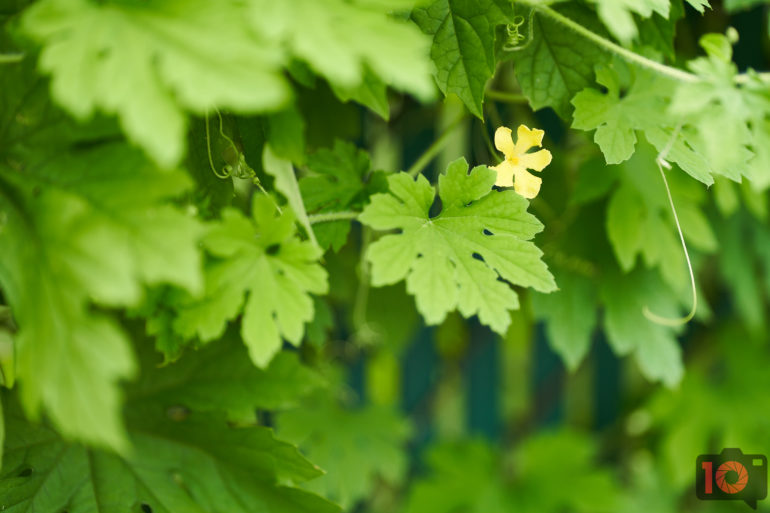
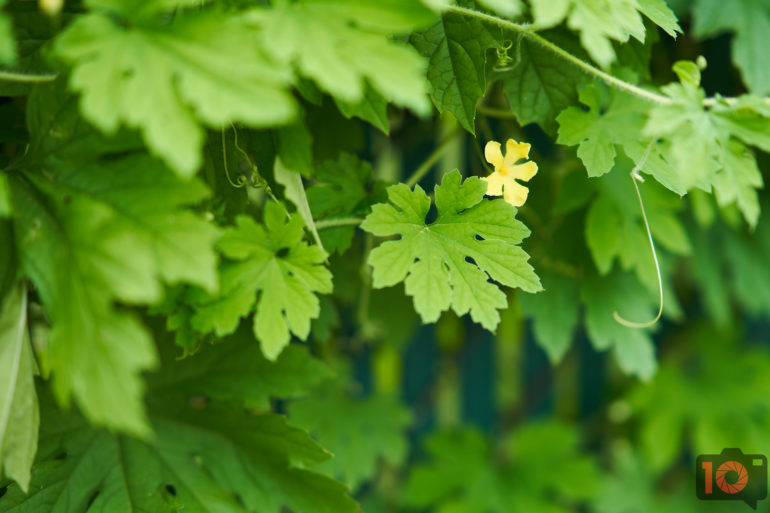












Under identical conditions and settings, images created with the Sigma 85mm f1.4 DG DN Art appeared roughly half a stop brighter than those produced with the Sony 85mm f1.4 G Master. Images shot with the Sigma appear slightly warmer in tone as well. The Sigma is also much more susceptible to focus breathing. Practically speaking, however, you’ll only notice these issues when comparing the results side by side or shooting both lenses back to back.
The 11-bladed circular aperture designs on both portrait lenses basically guarantees gorgeous bokeh as a result. Cat’s eye bokeh is definitely more pronounced on the Sigma, though. While some photographers find this distracting, we think this gives the Sigma more character.
The Importance of Lens Distortion Compensation
Pincushion distortion is a glaring issue with the Sigma 85mm f1.4 DG DN Art. The above image was shot with the Sigma with lens distortion compensations disabled. The pincushion distortion is rather significant. This is problematic if there are lots of straight lines within your frame. There’s noticeable vignetting towards the wider end as well. Be sure to enabling lens distortion compensation to remedy both issues. They can also be rectified during post-processing if you’ve been shooting with distortion compensation disabled.
Below are some additional comparisons (the difference in shutter speeds were to compensate for changing cloud coverage and available ambient light):








With the Sigma 85mm f1.4 DG DN Art, enabling Lens Distortion Compensation is critical. It significantly reduced the amount of pincushion distortion present. The Sony 85mm f1.4 G Master clearly benefits from being a first-party lens. There was no noticeable difference regardless of whether Lens Distortion Compensation was enabled or not.
Conclusion
So, were you able to tell the images apart in our comparison gallery? Both the Sigma and the Sony 85mm f1.4 G Master are excellent portrait lenses. You can’t go wrong with either. If you can’t tell the images apart, then save yourself $600 and opt for the Sigma 85mm f1.4 DG DN Art. Just make sure you turn on Lens Distortion Compensation. Otherwise, be prepared to do some work in post.
FYI, the first image of each example was shot using the Sigma while the second was taken with the Sony. For a more in-depth look at the be sure to check out our review of the Sigma 85mm f1.4 DG DN Art.


